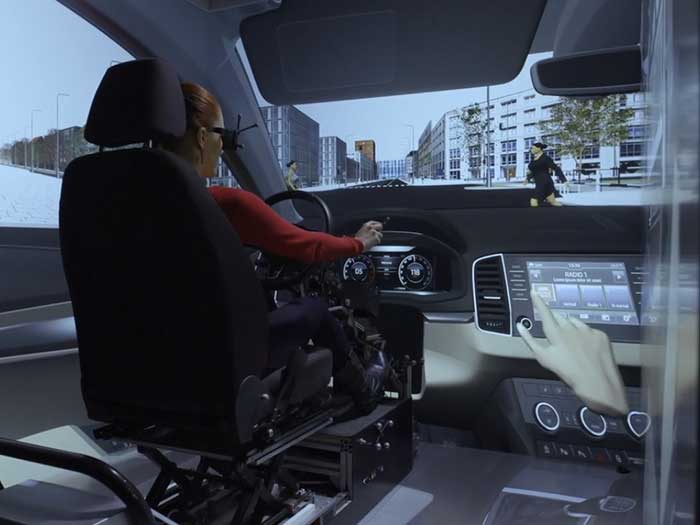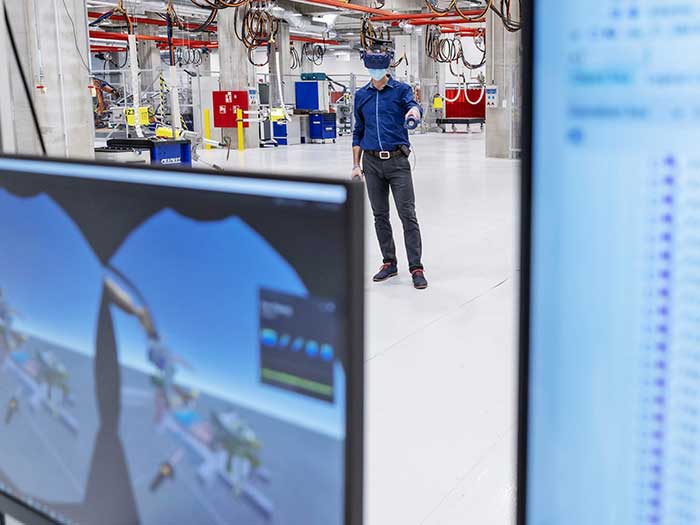A state-of-the-art facility for the manufacture of Å KODA prototypes
Despite the evolution of digital and virtual technologies, classic tests remain essential to the development of a car. That’s why ŠKODA has opened a new centre for the manufacture of test vehicles and prototypes at its Mladá Boleslav headquarters.
During the development stages of a new car, the manufacture of prototypes and test vehicles is crucial. For this reason, ŠKODA’s Technical Development department has opened a new dedicated centre for the manufacture of these special vehicles.
Based at the Mladá Boleslav site, the new facility uses state-of-the-art technologies, such as robot stations and virtual reality, throughout the entire production process.
Development and production
“The use of test cars and prototypes allows us to draw conclusions about numerous technical parameters at an early stage of development and make the necessary adjustments long before serial production,” explains Johannes Neft, ŠKODA Board Member for Technical Development.
The new facility means up to 300 test vehicles and 120 prototypes can be built every year under one roof: “We have created the ideal conditions here to develop vehicles of the highest quality and that will shape the future of our brand,” concludes Neft.
The important of tests

In order to monitor not only individual components but also the vehicle as a whole, classic tests remain essential, despite digital simulations and scale models gaining more importance in the development phase.
Due to the increasingly complex and powerful electronic architecture of modern vehicles, the focus is on functional tests of electrics, electronics and assistance systems, as well as on communication between in-car computers. For example, ŠKODA produced some of the test vehicles for the new, all-electric ENYAQ iV SUV at the new test facility.
A state-of-the-art facility
“Our new facility has three floors and houses the parts warehouse, body shop, final assembly and paint shop. All the departments are very close to each other, while the facility’s high degree of automation allows for more agile processes and significant capacity to produce test vehicles and prototypes,” adds David Vaněk, Head of Model and Prototype Manufacture. The new building also features 168 workplaces in open-space offices and 13 meeting rooms. A large part of the complex – 14,000 m² – is used for vehicle manufacture.
Efficiency over three floors
The ground floor accommodates the parts warehouse including a covered yard for unloading trucks. The car bodies are built on the second floor, while the third floor contains the final assembly and the paint shop. A freight elevator is used to transport parts and vehicles between floors. Thanks to two robot stations, the proportion of automation in the body shop has increased from 15 to 45 per cent. This doubles production capacity from five to ten car bodies per week – while requiring 20 per cent less space.
Furthermore, state-of-the-art technologies to save weight on the vehicles are also used here; the expanded body shop includes an innovation centre for testing advanced joining techniques, such as clinching, riveting, flow drill screw (FDS) fastening, laser welding and composite construction.
Virtual reality and quality control

The use of virtual reality allows workstations to be preconfigured and customised, and state-of-the-art IT systems are used in logistics. Quality control is integrated into the production process and runs parallel to the respective manufacturing steps. The new facility also includes a rolling road which can simulate speeds of up to 300 km/h.
The new facility is also very advanced from an ecological point of view: the short distances between departments save approximately 1,800 l of fuel per year, therefore enabling a decrease in CO2 emissions of roughly five tonnes per year. Incorporating the entire warehousing into the vehicle manufacture area also results in further savings, reducing logistics costs by more than 150,000 Euros annually.
Source: ŠKODA
